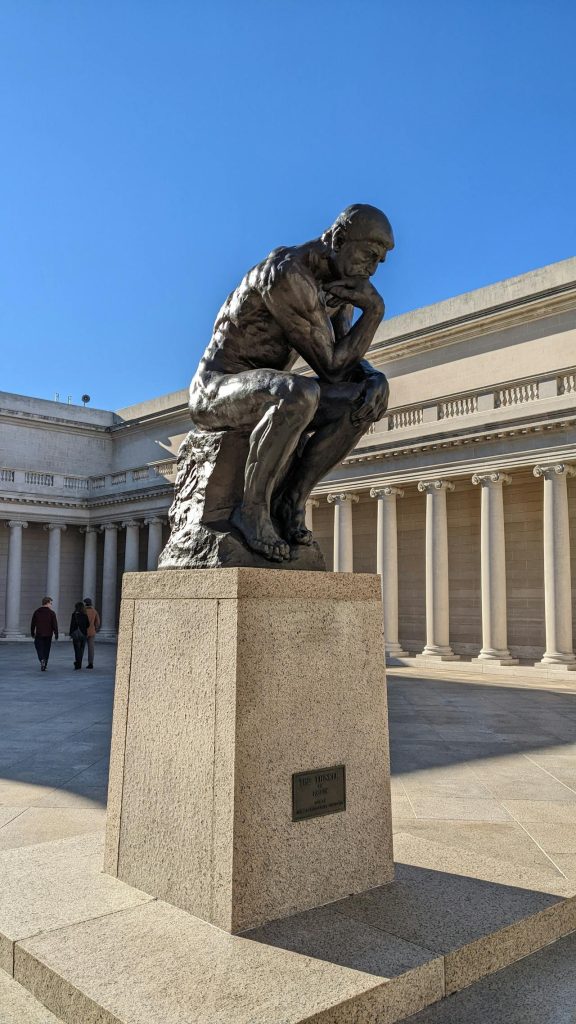Table of Contents
Essay: Modern French Sculpture: Evolution, Innovation, and Legacy
Introduction
Modern French sculpture holds a pivotal place in the evolution of art, particularly as it transitioned from the classical tradition to the groundbreaking innovations of the 20th century. Rooted in a long tradition of sculptural excellence, France became a hotbed for creative innovation, contributing to the transformation of sculpture from a medium predominantly focused on realistic forms to one that embraced abstraction, expressionism, and new materials. This essay explores the development of modern French sculpture, examining its defining characteristics, key figures, and its lasting impact on global art movements.

Photo by Pexels
The 19th-Century Foundation: From Classicism to Early Modernism
French sculpture of the 19th century provided the foundation for modern innovation, combining neoclassical precision with the emotive power of Romanticism. Auguste Rodin (1840–1917) is perhaps the most influential sculptor bridging the traditional and modern. His works, including The Thinker and The Gates of Hell, demonstrated an unprecedented expressiveness in form and surface. Rodin’s break from the academic traditions of highly polished and idealized figures into rougher textures and more dynamic poses reflected an increasing concern with the inner emotional world rather than mere physical perfection.
Rodin’s influence on modern sculpture cannot be overstated. He shattered the expectation that sculpture had to be a representation of the human form in its most idealized and static state. His works showed that human emotion, psychological complexity, and even the imperfections of nature could be integrated into the art. This opened the door for many French sculptors to experiment with more abstract and philosophical themes.
Cubism and the Move Toward Abstraction
The early 20th century marked a radical departure from representational art, with French sculpture becoming an integral part of the Cubist movement. Led by artists such as Pablo Picasso, though Spanish by birth but deeply connected to Parisian art circles, and Georges Braque, Cubism deconstructed natural forms into geometric shapes. This intellectual art movement sought to represent multiple viewpoints simultaneously, and sculpture became a crucial medium for exploring these dimensions.
One of the pivotal figures in modern French sculpture during this period was Henri Laurens, a sculptor associated with Synthetic Cubism. Laurens’ works, such as La Petite Musicienne, exemplified the shift toward a more abstract representation of the human figure. His sculptures, constructed of geometric planes and curved surfaces, broke the boundaries of traditional form and challenged the viewer’s perception of space and volume.
Surrealism and the Influence of the Avant-Garde
Surrealism, which emerged in the 1920s and 1930s, also left an indelible mark on French sculpture. This movement, centered on the exploration of dreams, the unconscious, and the irrational, allowed sculptors to push the boundaries of imagination and materiality. Jean Arp (Hans Arp), an artist connected with both Dadaism and Surrealism, pioneered biomorphic forms that were organic and free-flowing, often resembling natural shapes without directly representing them. Arp’s sculptures, such as Sculpture to be Lost in the Forest (1932), reflected a desire to connect art with the subconscious, offering forms that seemed both familiar and otherworldly.
Another key Surrealist sculptor was Alberto Giacometti. Although Swiss-born, Giacometti worked in Paris and became one of the most iconic figures in French sculpture. His elongated, skeletal figures, such as L’Homme qui marche (1960), conveyed an existentialist philosophy that resonated deeply in post-war Europe. Giacometti’s work reflects a profound exploration of the human condition, capturing the frailty, isolation, and perseverance of the individual in the modern world.
Post-War Sculpture and New Materials
After World War II, French sculpture continued to evolve, embracing new materials, techniques, and approaches. Artists began incorporating industrial materials like steel, glass, and plastic into their sculptures, reflecting the technological and societal changes of the time. This period saw the rise of kinetic art, where motion itself became a key element in the work.
One of the most notable figures of this era was César Baldaccini, commonly known simply as César. His use of unconventional materials—such as compressed automobiles in his Compressions series—challenged traditional notions of what sculpture could be. César’s sculptures were both a critique of consumer culture and a bold statement about the capacity for art to transform everyday objects into profound expressions of form and material.
The Legacy of Modern French Sculpture
Modern French sculpture played a crucial role in the global development of 20th-century art, influencing movements across Europe and the Americas. The tradition of innovation that began with Rodin’s emotive surfaces, expanded through Cubist abstraction, deepened with Surrealist explorations, and culminated in post-war experimentation, ensured that French sculptors remained at the forefront of artistic evolution.
Today, the legacy of modern French sculpture continues to inspire contemporary artists who push the boundaries of material, form, and space. From the works of Rodin displayed in the Musée Rodin to the kinetic sculptures of César and the haunting existential figures of Giacometti, French sculpture offers a rich testament to the capacity of the medium to reflect the complexities of the human condition.
Conclusion
The history of modern French sculpture is a narrative of breaking boundaries, challenging traditions, and exploring new dimensions of form and meaning. From Rodin’s emotive and textured surfaces to the abstract geometries of Cubism, the dream-like forms of Surrealism, and the experimental materials of the post-war period, French sculptors have consistently pushed the limits of what sculpture can express. Their influence remains a cornerstone of modern and contemporary art, shaping the way artists approach form, material, and concept in the 21st century.
In sum, modern French sculpture serves not only as a reflection of its time but also as a visionary force that continues to inspire and provoke, ensuring its place in the ongoing dialogue of art history.


No responses yet